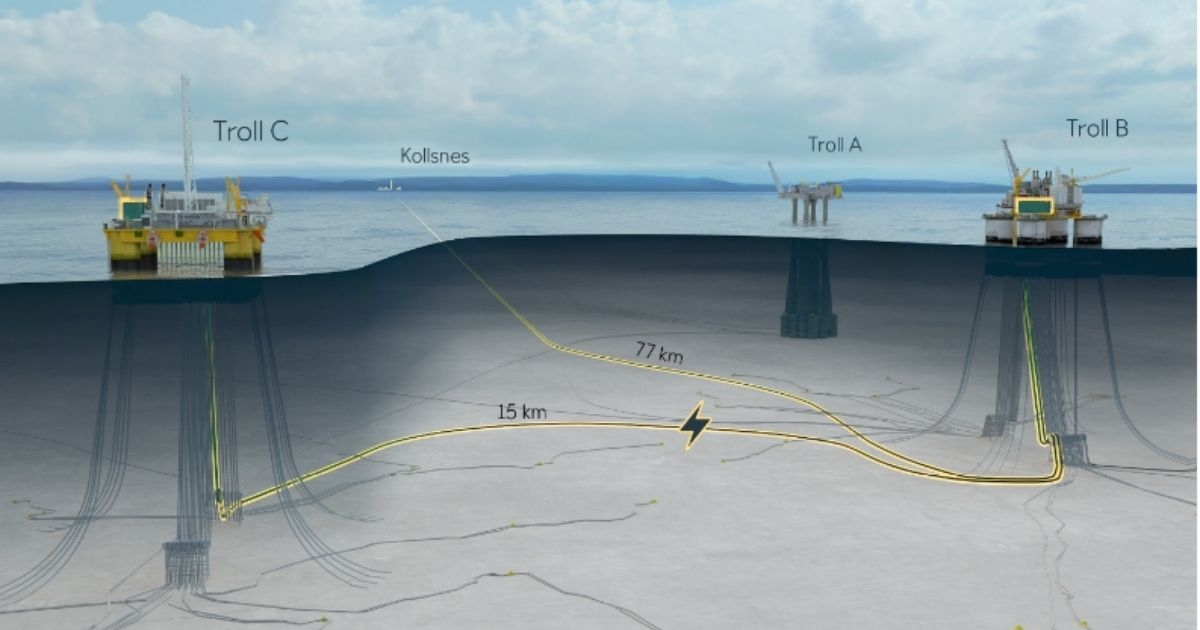Further Emission Cuts from the Troll Field

Once Troll Vest in the North Sea is hooked up to receive electric power through cables from shore in 2026 (Troll B partial, Troll C complete), this will result in emission cuts of 466,000 tonnes of CO₂ each year, according to statements by operator Equinor in a new plan for development and operation (PDO), submitted Friday.
This emission cut is equivalent to around one per cent of total emissions in Norway (around 50 million tonnes).
Troll A was the first platform on the Norwegian shelf to run on power from shore. Until now, Troll B and C have been run on power from gas generators on the platforms.
The work to modify and prepare Troll B is scheduled for completion in the spring of 2024, while Troll C will be ready for power from shore by the autumn of 2026.
The PDO describes the plans to modify the platforms in the North Sea, the onshore facility at Kollsnes outside Bergen and the power cables from Kollsnes out to the field. According to Equinor, the total investment is estimated at 7.9 billion kroner (2021).
Continued electrification of oil and gas fields using power from shore is important if Equinor is to keep its pledge of a 40 per cent emission cut by 2030.
Generally speaking, it is most profitable to electrify fields with long lifetimes (like Troll) and significant emissions, and which are located relatively close to shore.
In good weather, the Troll field can be glimpsed from the Ulriken mountain in Bergen.
Read more about the TROLL-Field
Source: Norwegian Petroleum Directorate

